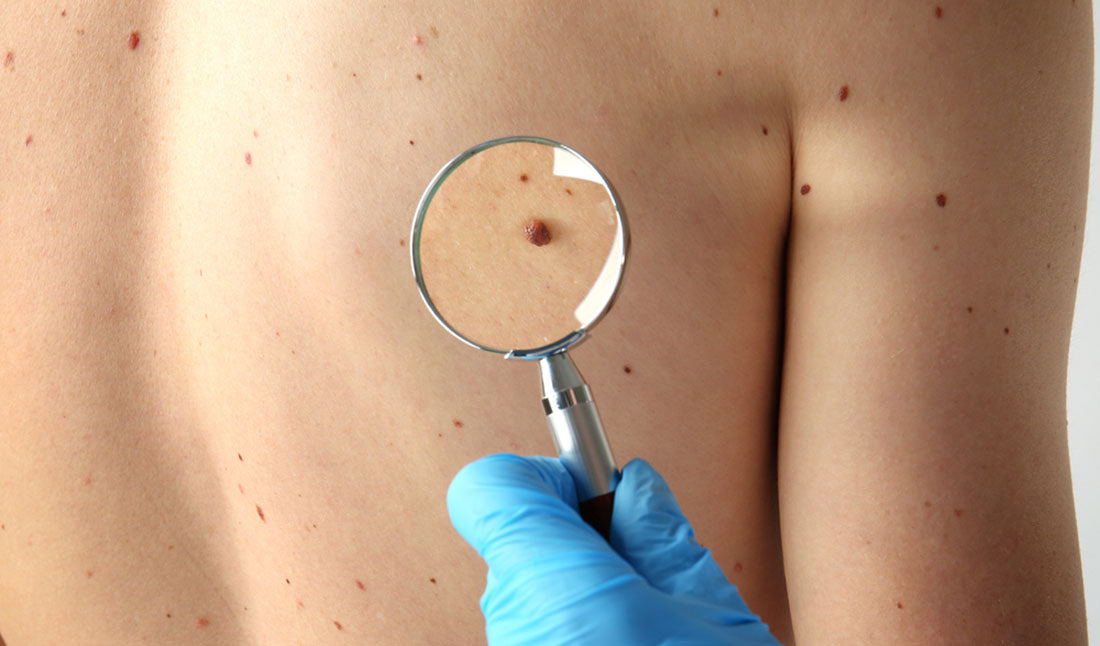Although skin cancer is often talked about as though it were a single disease, there are in fact several different types of skin cancer. The one you’re probably most familiar with is melanoma, the deadliest of them all.
Fortunately, melanoma only makes up two percent of all skin cancers. But if melanoma is the most dangerous skin cancer, which skin cancer type is the most common?
Here are three things you should know about the different types of skin cancer:
- Basal cell carcinoma and squamous cell carcinoma are the most common types of skin cancers and rarely spread to other parts of the body.
- Nonmelanoma skin cancers affect millions of people each year.
- A daily SPF of 15 or higher can reduce the likelihood of developing skin cancer.
Skin Cancer Types by the Numbers
There are several types of skin cancers, the most common of which include basal cell carcinoma (BCC), squamous cell carcinoma (SCC) and melanoma. These types of skin cancers are often divided into two groups: nonmelanoma and melanoma skin cancers.
Incidences of Nonmelanoma
According to a 2015 study published in JAMA Dermatology, there are an estimated 4.3 million cases of nonmelanoma skin cancers diagnosed each year in the United States (see claim: “…estimated an increase from 3.1 to 4.3 million U.S. adults in the treated for NMSC annually from 2002 to 2011.”)

However, it should be noted that there is no national registry for basal cell carcinoma and squamous cell carcinoma cases. This has made it difficult to get an accurate estimate of the rates of BCC and SCC in the United States. Even so, the American Cancer Society estimates that 80 percent of all skin cancers are basal cell carcinoma.
Incidences of Melanoma
Compared to basal cell carcinoma and squamous cell carcinoma, incidences of melanoma are relatively rare. According to a Cancer Facts & Figures 2019 report by the American Cancer Society, there will be an estimated 95,830 cases of melanoma diagnosed in 2019 (see claim: “p.4, 95,830 cases of melanoma in situ will be diagnosed in 2019…”)
Although it is less common, don’t let this lure you into a false sense of security. It’s still important that you recognize the warning signs of melanoma, especially given the fact that it’s more likely to strike men than women.
Basal Cell Carcinoma vs. Squamous Cell Carcinoma
While the exact causes of skin cancer can vary, all types of skin cancer start the same way. As skin cells begin to grow uncontrollably, they can begin pushing out normal skin cells and potentially spread to other parts of the body.
Medical professionals will diagnose the skin cancer by where it occurs in the skin.
Basal Cell Carcinoma: BCC occurs in the bottom layer of the epidermis, known as the basal layer. It starts when the DNA of basal cells begin mutating as a result of excessive sun exposure. BCCs can appear in the form of shiny, open sores, red patches and growths.
Squamous Cell Carcinoma: Squamous cells are found in the middle and outer layer of the epidermis, just above the basal cell layer. Although they rarely spread to other parts of the body, SCC is more likely to be aggressive than BBC. SCCs can look like warts, red growths, sores that bleed and scaly patches that may change.
No matter what the specific type of skin cancer, it needs be dealt with promptly. Although BCC may not be as deadly as melanoma, it can still cause disfigurement if not treated early.
Take the skin care quizHow to Reduce Your Risk
According to a 1997 study in the Journal of the Royal Society of Medicine, basal cell carcinoma is the most common malignancy in people with light complexions (see claim: “Social class 1/2, skin type 1, red/blonde hair and blue/green eyes were all related to BCC risk.”) However, this doesn’t mean that dark complexions are off the hook.
Anyone can get basal cell carcinoma, regardless of age, gender or ethnicity. To reduce your risk of BCC and other types of skin cancer, being smart about sun safety is key.

One of the best things you can do to reduce your risk is to use a daily moisturizer with SPF on your face. Think about it: Your face is the one area on your body that is almost never covered by sun protective clothing.
Additionally, a moisturizer is formulated to protect your skin from sun damage without being overly greasy. Use your SPF moisturizer on your face and neck while saving your regular sunscreen for your body.
Other ways to reduce your risk of basal cell carcinoma include avoiding the sun when UV rays are at their strongest (10 a.m. - 2 p.m.) and seeking the shade whenever possible.
Bottom Line
Although basal cell carcinoma is by far the most common type of skin cancer, it’s not the only type you need to concern yourself with. Along with getting regular skin screenings, be sure to perform self-checks on your moles and wear sun protection daily—rain or shine.








